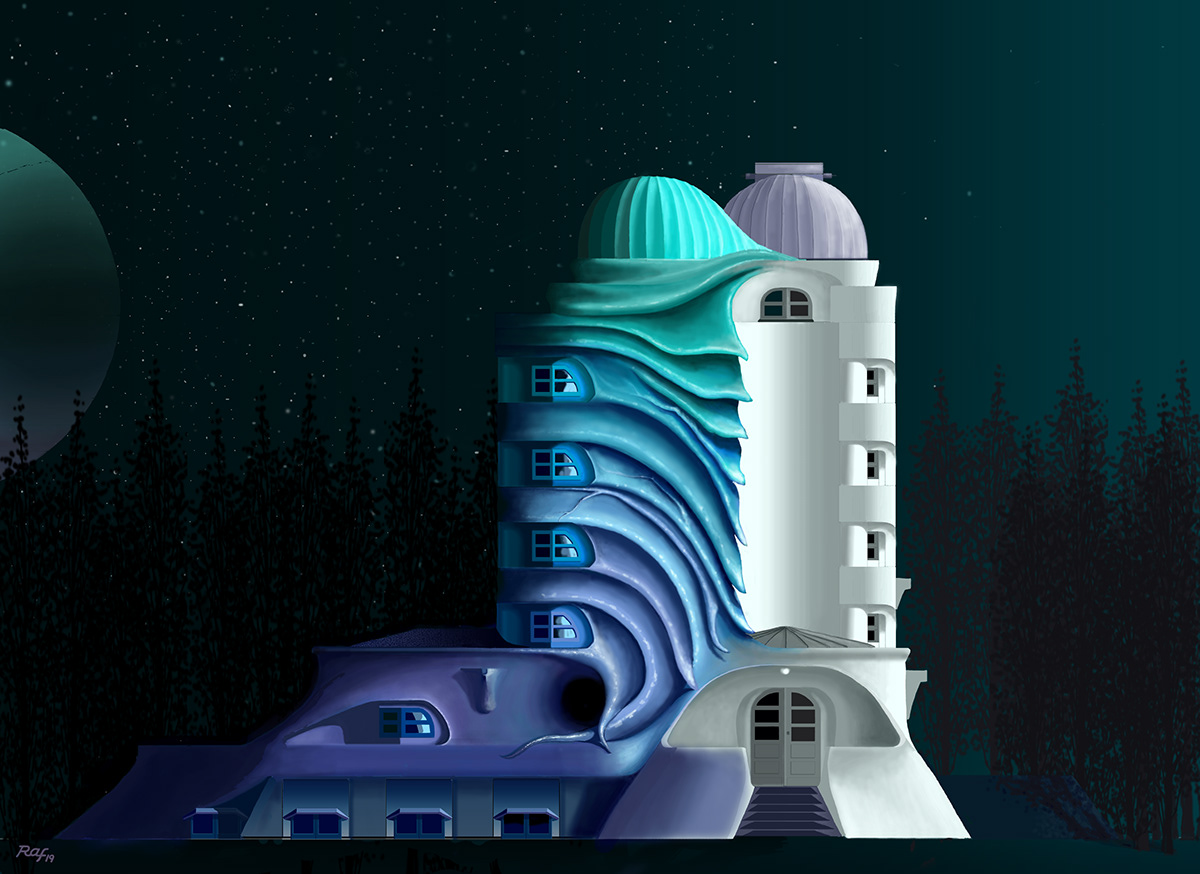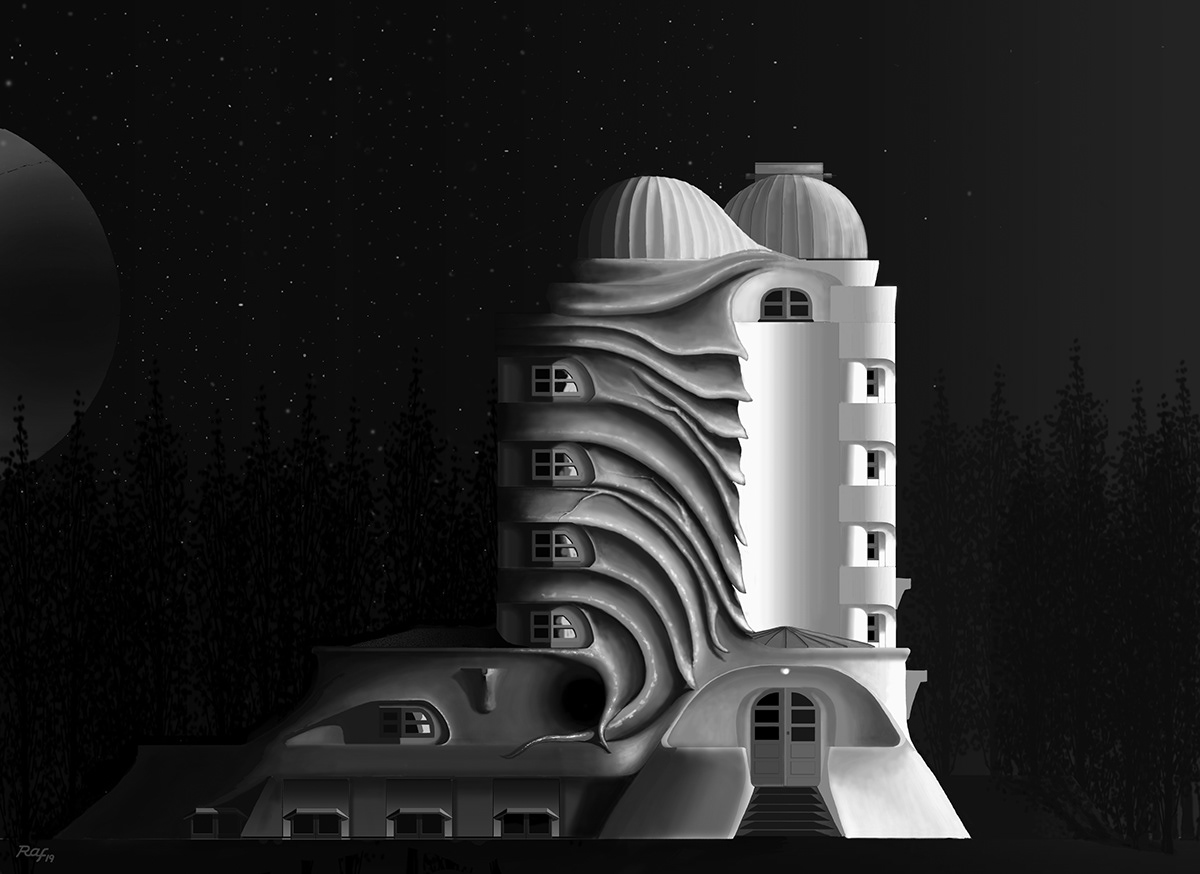
Einstein's tower dream
Dreams of a building
When talking about architecture, many argue that a building is not finished until it begins to fulfil the function for which it was designed, that is until it is not inhabited. Others add that it begins to change at that very moment.
There are those who equate constructions to living beings, whose metabolism is so slow that it is not possible to perceive with a naked eye, but that definitely changes over time.
This idea has been abundantly exploited in literature. Let us cite as an example the story by Edgar Alan Poe “The fall of the house of Usher” or “House taken over” by Julio Cortázar, and has been filmed countless times, where evil houses show no mercy to their inhabitants until those frightened persons interpret what it wants them to do.
By attributing them some features of living beings, they would be able to experience feelings and perhaps the wonderful human capacity to dream.
My way of imagining these dreams is to thoroughly study the formal conception of the building and start drawing freely on it through so-called automatic drawing.
The surrealists defined as automatic drawing the possibility that the subconscious had to express itself without conscious intervention. Later, these same artists find that automatic drawing is not completely automatic since there is a type of intervention to make the image visually acceptable or understandable. The French painter André Masson, belonging to this movement, defined it with the following sentence: "My automatic images involve a double process of activity, conscious and unconscious."
These series of drawings and paintings introduce the idea of imagining the possible dreams of some architectural works that I admire.
Raúl Alberto Fernández
Original ink drawing

Animation
Monochromatic

Detail










